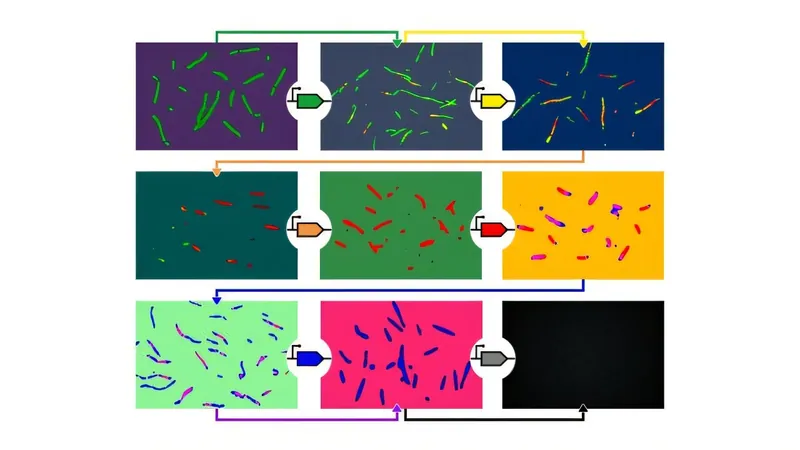
Unlocking the Secret Connection: How Gazing into Your Dog's Eyes Synchs Your Brain Waves
2024-11-03
Author: Yu
Unlocking the Secret Connection: How Gazing into Your Dog's Eyes Synchs Your Brain Waves
Prepare to be amazed! Recent discoveries reveal that the brains of dogs and humans actually synchronize when they gaze into one another's eyes. This groundbreaking research from China marks the first time “neural coupling” between species has been documented, opening up new avenues for understanding the extraordinary bond between humans and their canine companions.
What is Neural Coupling?
Neural coupling occurs when brain activity aligns between individuals during interactions, often evident during conversations or shared experiences among humans. While previously observed in same-species interactions—like mice or primates—this study highlights the unique connection that transcends species boundaries.
The implications are profound. This synchronization may enhance social behaviors and communication abilities, hinting that our interactions with dogs are far more complex than previously thought.
Dogs: More Than Just Pets
Dogs have long been cherished companions and were among the first animals to be domesticated. Their roles in human society range from therapy and disease detection to serving as guardians and herders. Their evolution alongside us has equipped them with the capability to understand human emotions remarkably well.
Researchers employed non-invasive electroencephalography (EEG) to study neural signals from both dogs and their human counterparts. By examining brain activity when subjects were together yet not looking at each other, the researchers could analyze the impact of mutual gaze and touch on the synchronization of brain signals.
The Power of Eye Contact
The key finding? When dogs and their humans locked eyes and shared physical affection, their brain activity aligned closely, particularly in areas responsible for attention. Participants who developed a bond over the course of the study exhibited even higher levels of neural synchronization. This echoes findings from earlier studies showing that increased familiarity among humans leads to similar brainwave patterns.
Amazing as it sounds, dogs have a remarkable ability to forge strong attachments with humans, a trait highlighted by a 2022 study showing that familiar human presence can lower stress in young wolves, our dogs' closest relatives. This highlights the importance of mutual affection and neural connectivity in strengthening the human-canine relationship.
Genetic Insights and Beyond
The research delved deeper by including dogs with a Shank3 gene mutation that negatively impacts neural connectivity. Dogs bearing this mutation demonstrated diminished neural coupling with humans, likely due to impaired signaling. Interestingly, when researchers administered a single dose of LSD—known to foster sociability in numerous species—the affected dogs revealed improved attention and restored neural connectivity with humans.
Though the ethical implications of such treatments cannot be overlooked, these findings underline the complexity and adaptability of canine brains—and the potential for scientific advancements that could impact how we understand and treat our furry friends.
The Takeaway
Looking into your dog's eyes isn't just a heartfelt experience; it might actually forge a deeper bond between you. Familiarity strengthens this connection, suggesting that your shared experiences can enhance mutual understanding.
So, the next time your dog gazes at you with those soulful "puppy eyes," remember—it's more than a cute moment; it's science! Embrace that gaze and continue developing an incredible bond that resonates on a whole new level.
The mystery of how our brains connect with our beloved pets may still hold more surprises, but one thing is clear: our relationships with dogs are multifaceted, and they are truly remarkable creatures deserving of our love and respect.



 Brasil (PT)
Brasil (PT)
 Canada (EN)
Canada (EN)
 Chile (ES)
Chile (ES)
 España (ES)
España (ES)
 France (FR)
France (FR)
 Hong Kong (EN)
Hong Kong (EN)
 Italia (IT)
Italia (IT)
 日本 (JA)
日本 (JA)
 Magyarország (HU)
Magyarország (HU)
 Norge (NO)
Norge (NO)
 Polska (PL)
Polska (PL)
 Schweiz (DE)
Schweiz (DE)
 Singapore (EN)
Singapore (EN)
 Sverige (SV)
Sverige (SV)
 Suomi (FI)
Suomi (FI)
 Türkiye (TR)
Türkiye (TR)